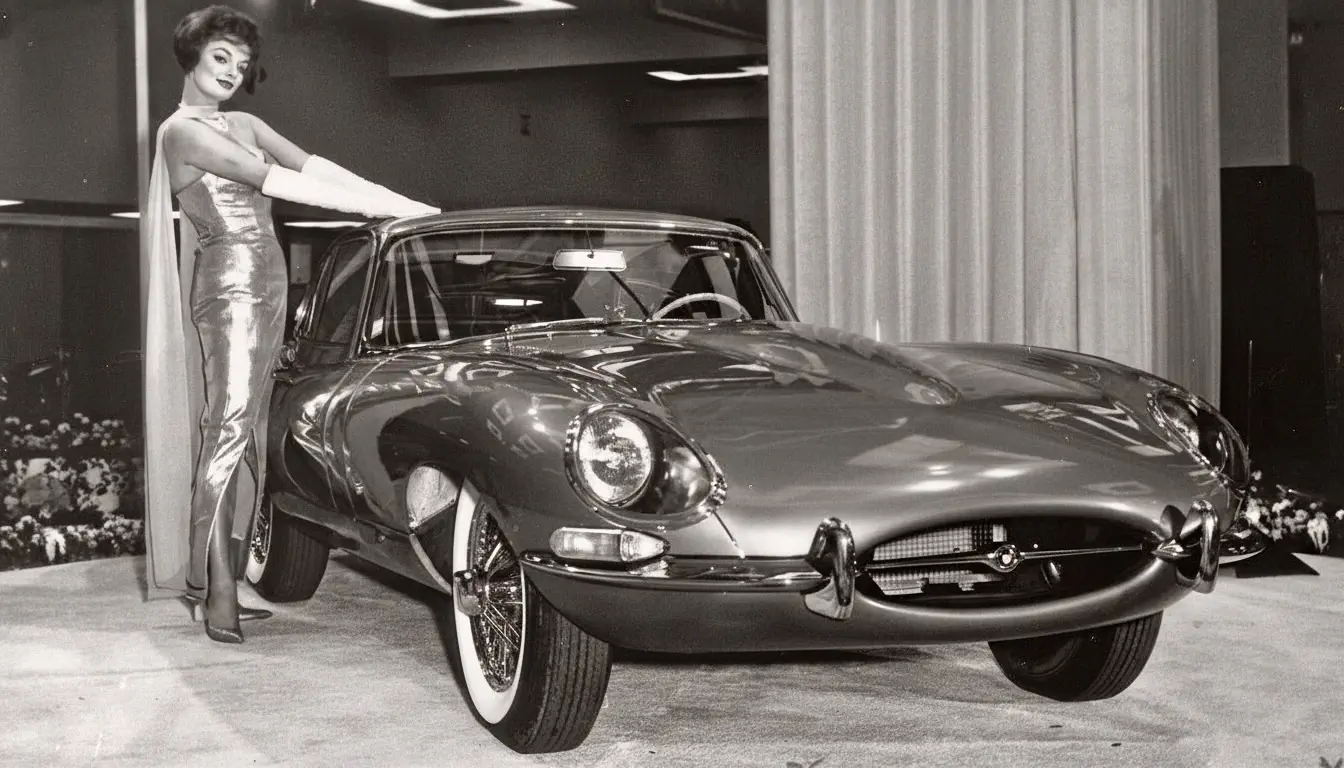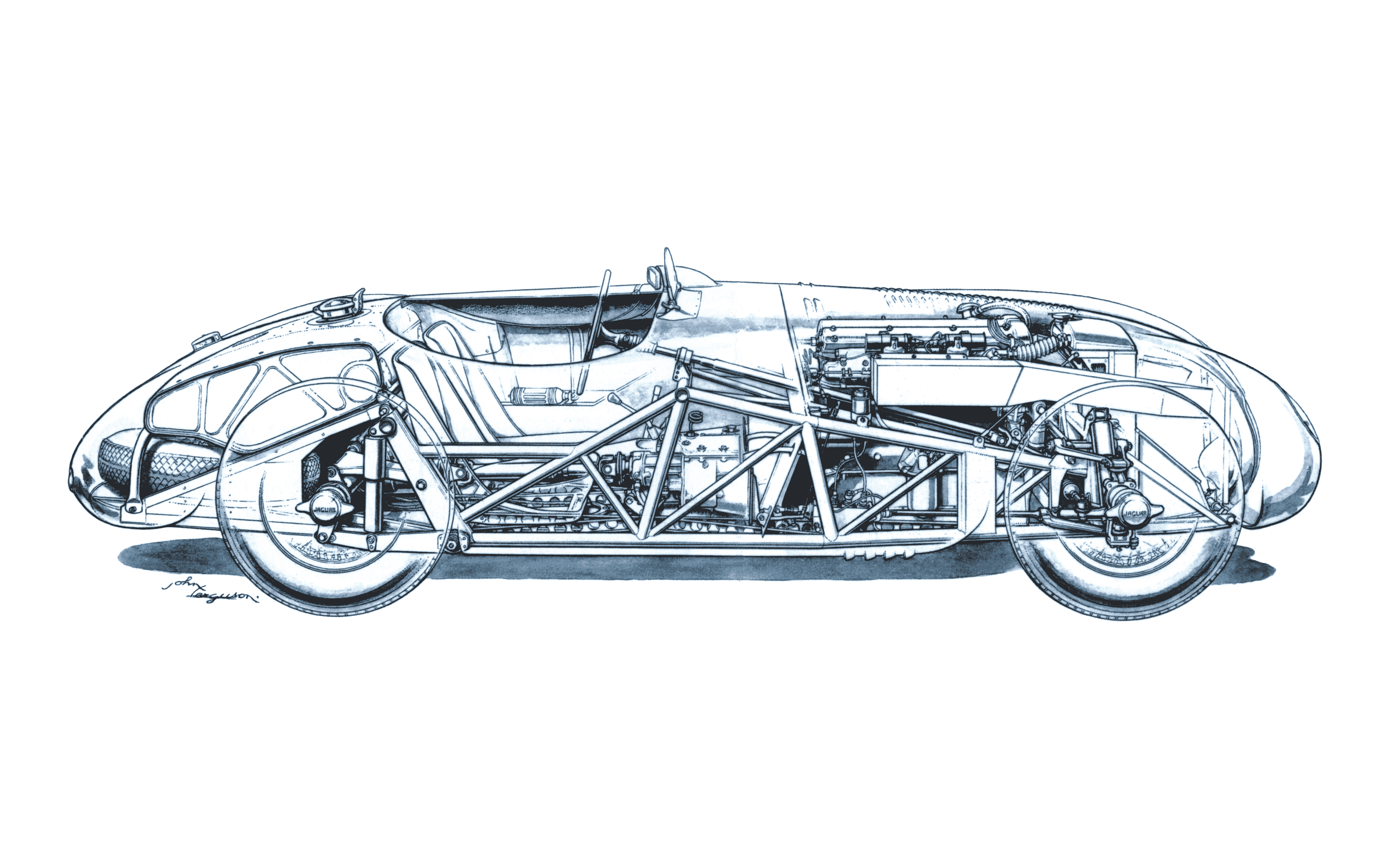Malcolm Sayer: The Man Who Calculated Beauty

In the 1950s, the world of car design was a three-way fight. In Britain, there were the accountants: men at Austin and Morris who ran their design studios like filing departments, producing upright, sensible, deeply apologetic cars that looked as if their primary brief was to avoid offending the vicar. In America and Italy, there were the artists: men like Harley Earl in Detroit with his chrome-plated fantasies, and the great carrozzerie such as Pininfarina, who sculpted metal with the passionate flair of Renaissance masters.
In Germany, there were the experimentalists, engineers at Porsche and Mercedes-Benz who had inherited a pre-war obsession with aerodynamics. They would put a clay model in a wind tunnel, get a number, shave a bit off, and try again. Rigorous, iterative, and rudely effective trial and error.
Jaguar hired a man who belonged to none of these camps. Malcolm Sayer was a quiet, pipe-smoking academic in a tweed jacket who believed that beauty was a calculable fact. A pure theoretician, he considered the wind tunnel a clumsy tool for proving what a mathematician should already know
The Bomber Man
Sayer’s worldview came from a different, and far more serious, industry. During the Second World War he worked at the Bristol Aeroplane Company on bombers such as the Blenheim and the Beaufighter.
There, a “beautiful line” was one that allowed a bomber to come home with one engine on fire. An “ugly” line created drag, wasted fuel, and made you a slower, fatter target for a Messerschmitt. He learned stressed-skin construction, fuselage design, and the hard laws of airflow over metal. The mathematics had to be right, because mistakes meant dead aircrews.
After the war, he became a professor of engineering at the University of Baghdad. That a nation which had invented the jet engine and won a world war could not stop its engineers from emigrating to teach stress loads to Mesopotamian undergraduates rather than stay home and build cars says everything about Britain’s attitude to its own talent.
The Aerodynamic Problem
William Heynes, Jaguar’s chief engineer, recruited him from Baghdad in 1951. The company’s new XK120 was a sales sensation, a car of such shocking glamour that it had caused chaos at the 1948 Motor Show. But aerodynamically, it had all the efficiency of a house brick.
Heynes, having just secured his boss’s approval to go racing, knew that to win at Le Mans he needed someone who understood airflow rather than someone who merely made a bonnet look pretty.
Sayer’s first project was the C-Type, built in a frantic hurry for the 1951 race. He took the XK120’s mechanicals and wrapped them in a new, fluid aluminium skin. Using log tables, he calculated the curves to create a shape that disturbed the air as little as possible. The car reached 150 mph with ease and won Le Mans at its very first attempt.
The Magnesium Revolution
His next project, the D-Type, abandoned the traditional chassis entirely. Sayer designed a central monocoque tub made from lightweight magnesium alloy, a rigid shell that carried all the structural loads itself. The engine, suspension, and driver all bolted directly into this stressed-skin hull. No separate frame, no heavy steel ladder.
He then added the famous tail fin to keep the car pointing in the right direction at 170 mph on the Mulsanne Straight. Simple physics. The fin looked dramatic, certainly, but the drama was a side effect of function rather than the goal.
Lyons was horrified by the cost and complexity. The magnesium alone cost a fortune, and the specialised welding required craftsmen who understood aircraft construction rather than traditional coachbuilding.
The D-Type won Le Mans three years in succession. In 1955, it finished nearly five laps ahead of the second-place Aston Martin. In 1956 and 1957, Jaguars filled the top positions. The competition was not even close. This settled Heynes’s argument with Lyons rather conclusively.
When Function Became Lust
By 1961, Sayer had perfected the monocoque and mastered high-speed stability through a decade of racing. He then applied everything he had learned at Le Mans to a road car for the public. The E-type was not a stylist’s fantasy adapted for production but a racing machine adapted for the street.
Every curve came directly from aerodynamic calculation. The long, low, tapering bonnet was shaped to cut the air with minimal drag. The wraparound bumpers, the covered headlamps, and the delicate tail that tucked in neatly were all solutions to specific aerodynamic problems. The public, however, saw something else entirely. They saw the most sensuous shape ever put on four wheels.
A car designed with the cold precision of slide-rule mathematics turned out to be the most desirable object on the planet. When Enzo Ferrari called it “the most beautiful car ever made,” he was praising a man who had never studied aesthetics, never sketched flowing curves for their own sake, and never once asked “does this look good?” Sayer had simply asked “will this slip through the air efficiently?” and built exactly that.
The XJ13 and the End
Sayer’s final major work was a mid-engined V12 Le Mans prototype, the XJ13. It was stunningly proportioned, mathematically precise, and completely irrelevant. Rule changes for Le Mans in 1968 made the car ineligible before it ever turned a wheel in anger. The British Leyland merger was already grinding the company into bureaucratic paralysis. The car never raced. It sat in a museum instead, a monument to what might have been achieved if the accountants and politicians had stayed away long enough for the engineers to finish their work.
Before he could see his next projects completed, Malcolm Sayer died of a heart attack in 1970. He was fifty-three. He left behind no styling empire, no school of disciples, no dramatic legacy, only a small office with a slide rule and a set of log tables.
The Revolution Nobody Noticed
The British car industry learned precisely nothing from Sayer’s methods. After his death, Jaguar hired stylists again, designers who sketched attractive shapes and then asked engineers to make them work, the traditional British approach. The idea that you could calculate beauty rather than sketch it died with him.
The Germans took a different view. By the 1970s, Porsche and BMW had entire departments doing exactly what Sayer had done alone. They calculated optimal forms, refined them slightly for visual appeal, and built cars that were both efficient and desirable. They turned Sayer’s individual brilliance into corporate methodology.
Britain loved the romance of the artist, the drama of the autocratic stylist with his umbrella and his infallible eye. A mathematically calculated aesthetic felt wrong somehow, like cheating. Beauty was supposed to come from talent and instinct, not from logarithm tables and slide rules. The idea that an equation could be more beautiful than a sketch offended the national sense of how the world should work.
Britain celebrated William Lyons as one of the great automotive stylists. Malcolm Sayer got the quiet respect of aerodynamicists who understood what he had achieved. Which, in the end, explains rather a lot about what happened to the British car industry.









